This article examines several types of louver blades and how these blades work for their intended application. Learn how the blade makes the louver.
Louver Blades - The Core of the Louver
Louver blades are the most important part of a louver. Blades allow air to pass between them and keep undesirable elements out. A louver’s blades will determine the louver's capabilities.
.webp?width=400&height=400&name=MCDLG2021%20-%20Product%20Spotlight%20Posts%20-%20Square%20-%20Stationary%20Louvers%20(Resize).webp)
The blade's design dictates whether it will work best as an airflow louver, a rain resistant louver, an acoustical louver, a sight proof louver, or any other kind of louver. Each blade will have various features that differentiate one blade type from another. These features are known as the blade's profile.
There are several distinct types of blade profiles, and each is best suited for a specific function: air performance, water penetration, vision blocking, etc. We will look at the various louver blade types, examine their profiles, and learn what each blade type does best.
Need some louvers for an upcoming project? Arrow United Industries is here to help. We build a wide variety of louvers to meet important airflow requirements. Contact Arrow United today and let's work together on your next project.
Drainable and Non-Drainable
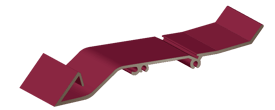 Drainable Blades
Drainable Blades
Drainable blades are designed to carry excess water out of the louver. These blades have special gutters fixed to the front, designed to catch water as it rolls off the blades. The gutters lead to special channels in the louver’s jambs that drain the excess water down the sides of the louver and out the sill.
By controlling the flow, drainable blades lower the risk of water penetrating the louver. Check out this Newsstand article for more on drainable louvers.
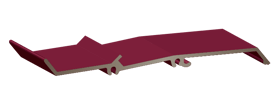 Non-drainable Blades
Non-drainable Blades
Non-drainable blades do not have gutters. These are considered the standard blade type for air control louvers. Gutters affect air performance by creating places for air to drag. By removing these gutters, non-drainable blades allow air to pass into the louver without resistance.
A non-drainable blade can still block water from entering a louver. However, without gutters, the excess water will simply roll off the blades.
This can create a waterfall effect on the louver’s face: water from higher blades falling onto lower blades, which collects and falls onto the bottom blades, creating a major excess of water at the bottom of the louver.
Blade Profiles
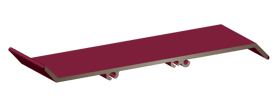
Straight Blades
Also known as J blades, straight blades are flat along the blade’s surface. This design is the best for ventilation because it has no features or catches to resist airflow. Adding features to a blade affects the louver’s air performance.
Best used for: Air performance and basic protection
Without blade features, air can pass freely through the louver, which lowers the louver’s pressure drop. At higher blade angles, straight blades can block water penetration and can effectively remove excess water with drain gutters.
 Baffle Blades
Baffle Blades
Also known as K blades, baffle blades start flat at the louver’s face, but have a raised portion towards the back of the louver like a stair step. These raised portions create catches that capture moisture before it passes through the louver.
Best used for: Standard weather protection
When equipped with a drain gutter, baffle blades are effective at stopping water penetration. However, these catches will affect the louver’s pressure drop and overall air performance. Take a closer look at baffle blades with this quick Condenser article.
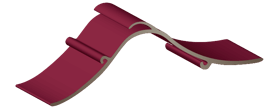 Chevron Blades
Chevron Blades
Chevron blades come in different shapes – inverted V, inverted Y, and inverted Z – but each design serves a similar purpose. Chevron blades have an upward curve at the center of the blade, creating a wave design through the louver free area. This wave design creates a pathway for airflow and a natural catch for moisture.
Best used for: Wind drive rain and hurricane protection
As air passes over the curve, heavier water particles slide down the incline of the blade. Chevron blades can also have catches to stop moisture if it passes over the curve, adding another barrier for water penetration. These blades are an excellent option for weather protection. Learn more with "Chevron Blades for Severe Weather".
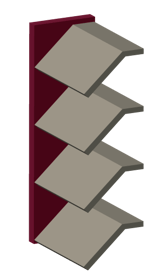
Sight Proof
Chevron blades can also act as sight proof blades. Their curved design creates a visual barrier between blades, effectively concealing the interior spaces behind the louver.
Best used for: Privacy
Sight proof blades are often used in areas that require concealing an interior space. They are commonly used in elevated openings, where passersby can see through the blades of a standard louver.
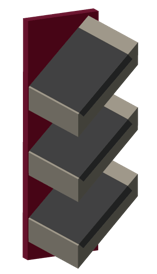
Acoustical Blades
Acoustical blades are specialized louver blades that contain sound insulation material which dampens loud noises behind the louver. These blades are much thicker than a standard blade. They require a large frame.
Best used for: Acoustical dampening
Acoustical blades are often used in areas with heavy machinery -so that the noise doesn’t bleed through to outside spaces - while providing ventilation to the equipment inside. In other words, acoustical louvers keep the noise pollution from spreading.
Adjustable Blades
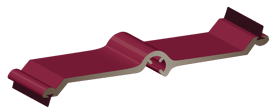 Adjustable blades can be adjusted to meet changing air conditions. These blades are connected together with a linkage, which allows all blades to open or close at the same time.
Adjustable blades can be adjusted to meet changing air conditions. These blades are connected together with a linkage, which allows all blades to open or close at the same time.
In some cases, they are also called operable blades. With an actuator installed, these blades can open or close the louver automatically for a variety of HVAC scenarios. Adjustable blades can be drainable or non-drainable, depending on their required function.
Best used for: Combining louvers and dampers in one unit
There may applications that require you to close and open a ventlation point. Adjustable blades act like damper blades. This allows the louver to double as a control damper at intake and exhaust points in the building. Adjustable louvers can save space.
In combination adjustable louvers, stationary blades are installed on the face of the louver and the adjustable blades are situated behind them. With combination blades, the louver can close while still maintaining the horizontal lines of the stationary blades.
The Blades make the Louver
.png?width=200&height=300&name=Blade%20Profile%20-%20EA605%20(Resize).png) Each blade's shape and its features define how the louver will perform. Blades with catches will block water penetration but will have lower air performance than a straight blade.
Each blade's shape and its features define how the louver will perform. Blades with catches will block water penetration but will have lower air performance than a straight blade.
Drainable blade gutters also affect air performance, but direct excess water out of the louver and increase the louver's water blocking capabilities.
It all depends on what you need the louver to do. By knowing the louver's primary purpose, you will have a better idea of which louver blades will work best for the task.
Learn more about louvers with these Newsstand articles:
Which louver blades work best for your next project? Do you think there are any blade types that will work better for your current buildings? Share your thoughts about louver blades in the Comments section. We want to hear from you!
Do you have a question on something we haven't covered here? Or maybe you need help from industry experts? MCDLG can help. Contact us by clicking on the button below.
.webp?width=91&height=70&name=MCDLG%20Logo%20(Resize).webp)
.webp)




